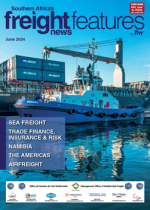Namibia’s parliamentary standing committee on economics and public administration says the Namibian Ports Authority (Namport) and the railway company TransNamib must work together as Namibia positions itself as a transport hub in southern Africa.The committee said, after touring the two companies’ operations across the country, that partnership would harness the strengths of each entity and foster mutually beneficial outcomes.During a visit to the railway line linking to the Port of Lüderitz, the committee said it was evident that a holistic perspective of the entire transport network, encompassing both rail and port facilities, was crucial for a comprehensive understanding of logistical infrastructure and how these two components of the system worked in synergy to support trade and transportation activities. Their report noted that the Port of Walvis Bay played a pivotal role by offering a more efficient and rapid transit route connecting southern Africa, Europe, Asia, and the Americas. This strategic location enhances trade and shipping opportunities for Namibia and its landlocked neighbours. The Port of Lüderitz caters to southern Namibia and provides access to markets in the Northern Cape of South Africa, further contributing to regional trade.Namport currently handles seven million tons of cargo annually. With the capacity to handle 750 000 TEUs (Twenty-Foot Equivalent Units) per annum, Namport played a significant role in containerised cargo trade, providing essential infrastructure and services for global and regional logistics, the report noted. The committee said that Namport had witnessed a substantial increase in cross-border cargo volumes, ref lecting its vital role in facilitating international trade.The main markets served by Namport in cross-border trade include South Africa, Zimbabwe, Zambia, the Democratic Republic of Congo (DRC) and Botswana. Walvis Bay’s main export commodities include salt, coal, copper concentrate, charcoal, fish, fish products, copper blisters and cathodes. The main import commodities comprise grains, wheat, sulphur, building materials, vehicles, petroleum products and fish.The Port of Lüderitz’s main export commodities include manganese ore, zinc and fish. The main imports through Lüderitz include frozen goods and petroleum. The parliamentarians want Namibia to rectify the bottlenecks within the railway transport infrastructure so that it can maximise its role in the broader logistics value chain, enabling seamless trade, and reinforce its economic standing.“This visit has underscored the pivotal role that railway infrastructure plays within the broader context of national and regional development. It is imperative that these efforts continue to receive the necessary support and resources to ensure the successful realisation of their objectives,” the report said.

